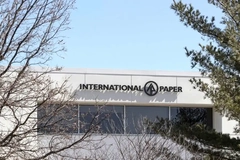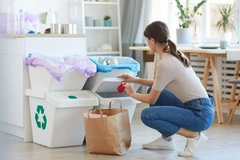FachPack 2022: Taghleef advocates for LCA and labeling regulation amid rising consumer concerns
04 Oct 2022 --- Conducting life cycle analyses (LCA) are crucial for companies to back up their labeling claims with scientific objectivity. However, the market shows evidence that some companies tend to act more in their own interest, looking at sales rather than data when making packaging material choices, claiming that their products are sustainable without solid data in mind.
At FachPack 2022, we speak with Monica Battistella, product and sustainability manager at Taghleef Industries, about the necessity for companies to conduct LCAs. She also gives insights into misleading and unregulated labeling on packs and what can be done to improve these issues.
Headquartered in Dubai, UAE, Taghleef Industries is one of the largest global manufacturers of biaxially oriented PP films (BOPP), cast polypropylene films (CPP), biaxially oriented polylactic acid and biodegradable films (BOPLA) offering a standard and specialty film manufacturing capacity of more than 500,000 metric tons.
“At the moment, LCA’s are the best choice to tell you if you are really choosing the most suitable packaging material or if you are just changing the material of your packaging to meet other expectations. It is important to look at the emissions [caused by production] and the global impact of the solution,” she says.
“So ideally, LCA’s would be a requirement, and the incentive to apply this ‘measurement’ should come from the EU – to make sure that people are not driven by emotions or by consumer expectations.”
 Taghleef presented its different solutions at FachPack 2022. Misleading labeling
Taghleef presented its different solutions at FachPack 2022. Misleading labeling
Battistella warns that there is a lot of label misinformation that consumers should be aware of.
She says when she buys something, she checks the material composition of the packaging and often, it is incorrect. Being an industry expert, she can tell whether the information provided on the labels is factual or not.
Battistella provides an example of material misinformation she has observed, a claim stating “made of paper” but the product is sealed. “Paper doesn’t seal unless there is lamination or coating so this is misinformation for the consumer.”
The same issue applies to claiming packaging is sustainable. “A packaging’s material is sustainable compared to what? Have you measured its impact?” she questions.
“The EU has provided some labeling instructions, but how individual countries have translated those instructions into national legislations or laws differs. And that is a problem.”
“There is a lack of regulation that needs to be fixed,” she asserts.
Overcoming regional differences
Battistella explains that recycling programs often don’t only differ between countries but also within a country’s regions.
“The labeling system should make it easy for the consumer to understand and know how to dispose of a certain packaging product.”
She says that one idea would be to identify packaging by colors. Yellow means plastics in several countries, or in specific regions of a certain country and it would be an idea to standardize this across the EU.
“We need to support the average consumer in disposing of their end products – people don’t need to know what polymers are in the packaging but how to dispose of it.”
The Taghleef booth at FachPack 2022.
Acting on consumer sensitivity
Battistella highlights that consumers have a new sensitivity. “They are very sensible to act sustainably and to do the right thing. Consumers want to be part of the solution, and they want to do whatever they can at their homes and by buying products that indicate that they are supporting the system.”
Because consumers have limited product knowledge, she worries that they might choose based on claims promoted on the packaging which are sometimes not reflecting the truth when it comes to not choose the best product regarding production emissions and environmental impact. So there’s a need to better respond to customers’ needs reporting correct information on the packaging and this is in the hands of brands. This is what brands should do – respond to consumers’ needs.
“Companies should explain to consumers why they chose a certain packaging, explain shelf life conditions required by the content and protective qualities of the packaging. They should communicate to people that ‘based on the packaging analysis, this is the best packaging choice for this product.’”
The product and sustainability manager continues by highlighting that the packaging material choice impacts logistics and the entire value chain.
“It is not only about the weight of the packaging itself. Packaging material Packaging material is essential also for the logistics part because of its weight, size and ratio with its content. So deciding to use a certain material packaging instead of another, will reflect in different number of trucks which are needed for transporting the same quantity of product. Each material is the best choice for specific products but this needs to be evaluated at 360 degrees.”
“People are ready to understand, but companies need to tell them why they make certain choices.”
“If the objective is to take care of the climate emergency that we have, we have no time to waste,” asserts Battistella.
She says that the people want to be part of this initiative and support it to their best knowledge.
“People see the pollution and the littering and the solution to the littering is building the right infrastructure, collection systems, investing money in extended producer responsibility systems and in new technologies – the knowledge that has been invested in the improvement and recyclability of PET bottles must now be expanded and invested in other areas.”
By Natalie Schwertheim












